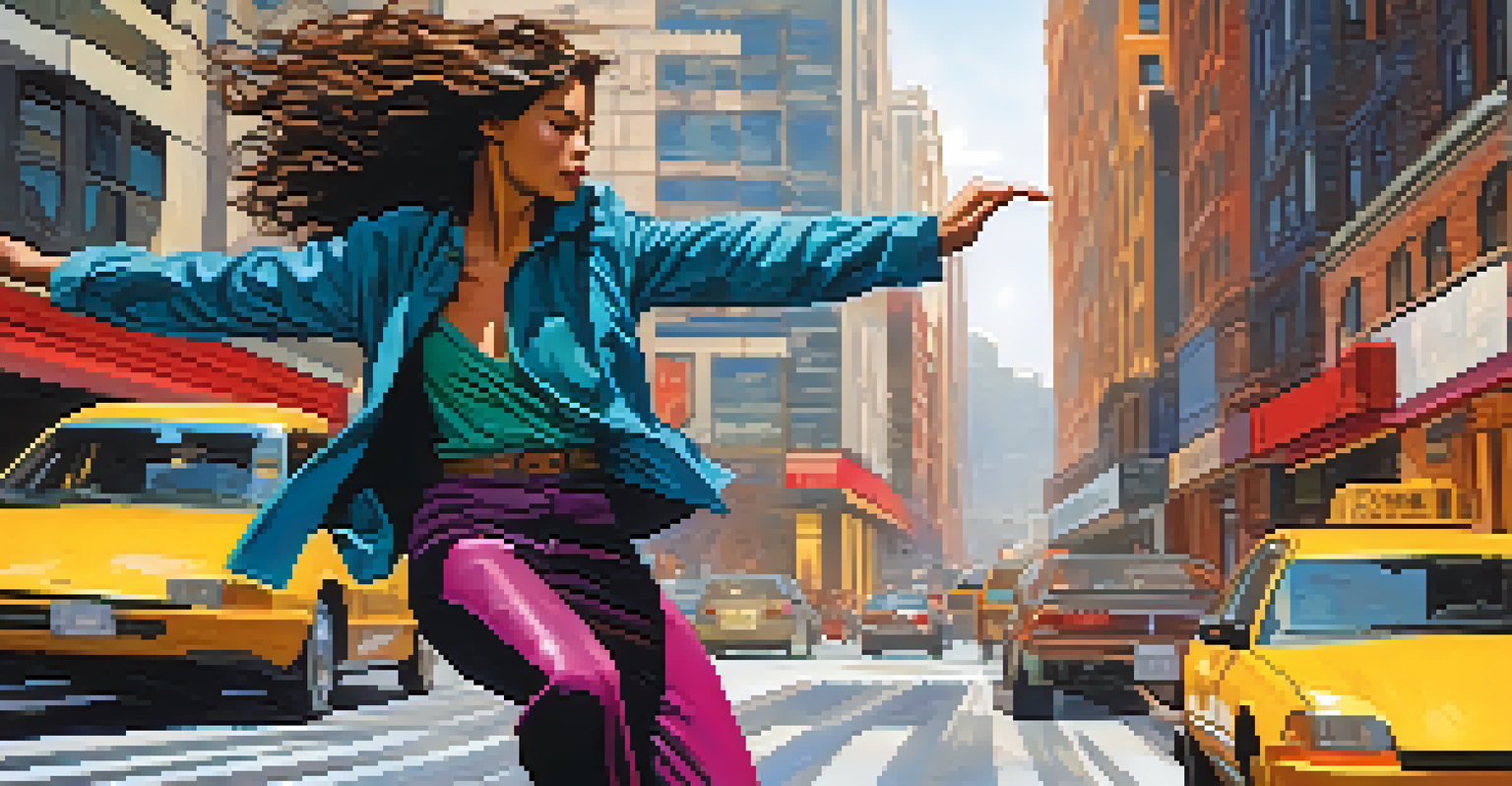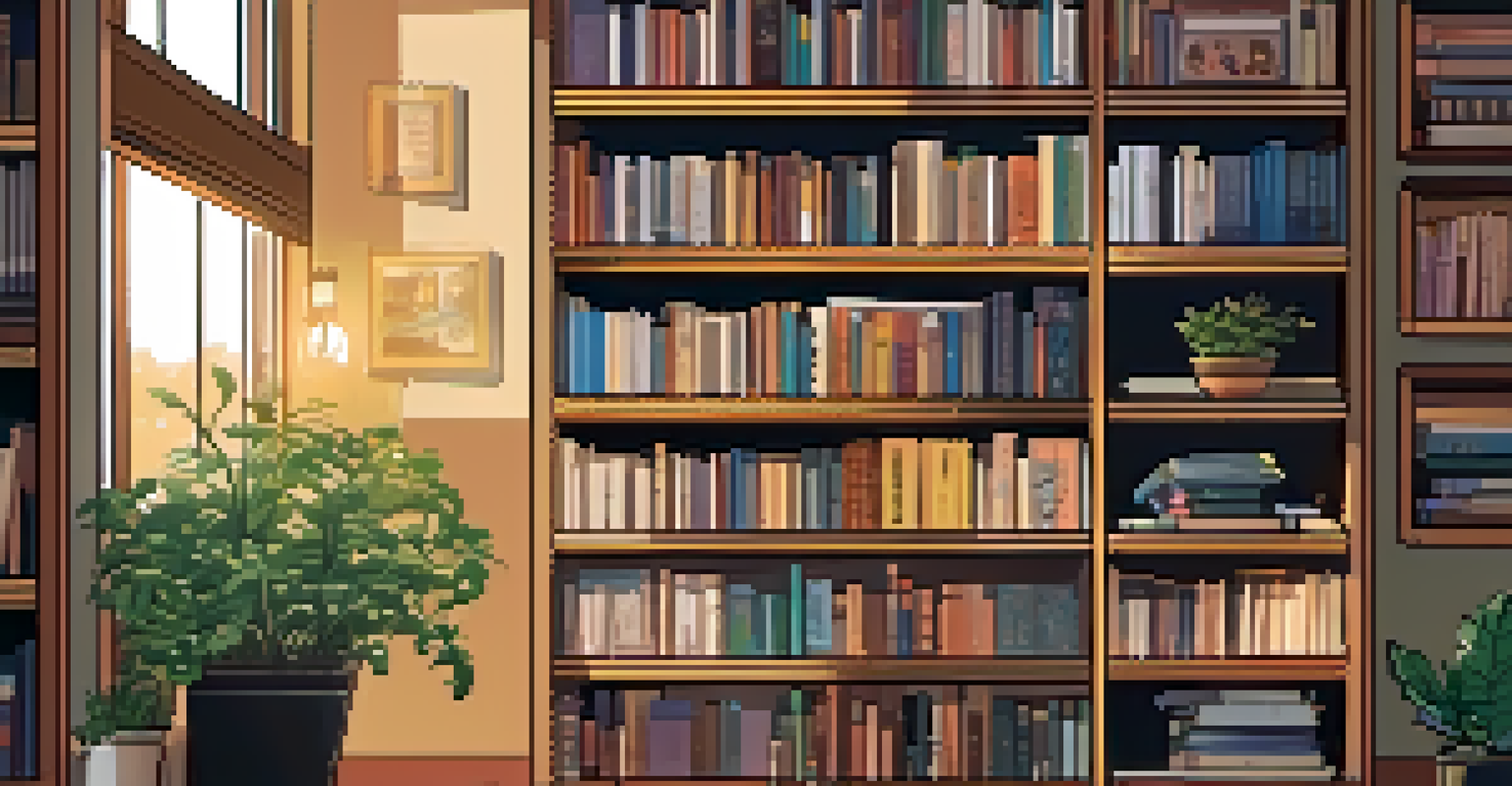The Graphic Novel: A Fusion of Art and Literary Storytelling

Understanding the Graphic Novel: A Unique Medium
Graphic novels stand out as a captivating blend of images and text, offering a unique storytelling experience. Unlike traditional novels, they use sequential art to convey narratives, making them accessible and visually engaging. This unique format allows for a deep emotional connection with the audience, as readers not only consume the story but also experience it through stunning visuals.
Graphic novels are a unique medium that combines visual art with storytelling, creating an immersive experience that engages readers on multiple levels.
The combination of art and literature in graphic novels creates a dynamic interplay that enriches the narrative. Readers are invited to interpret both the words and images, often leading to a more immersive experience. This dual-layered approach can make complex themes more approachable, allowing a wider audience to connect with the material.
Moreover, the graphic novel format has evolved significantly since its inception, embracing diverse genres and styles. From memoirs to fantasy epics, there's a graphic novel for everyone, showcasing the versatility of this medium. As a result, graphic novels have carved out a significant niche in the literary world, drawing in readers of all ages.
The Artistic Element: Visual Storytelling in Action
Art plays a pivotal role in graphic novels, serving as a powerful storytelling tool. The illustrations not only complement the text but can also convey emotions, settings, and character nuances that words alone may struggle to express. This reliance on visual storytelling creates a unique rhythm where art and narrative flow together seamlessly.

For example, a character's expression or the use of color can evoke feelings that enhance the reader's understanding of the plot. A dark palette might indicate tension or danger, while bright colors can signify joy or excitement. This visual language allows authors and artists to communicate complex ideas quickly and effectively, making the story more engaging.
Graphic Novels Blend Art and Text
This unique format enhances storytelling by combining visual elements with written narratives, creating a more immersive experience.
Readers often find themselves captivated by the art, leading them to linger on pages longer and absorb details that enrich their understanding of the narrative. This synergy between text and visuals not only makes reading a more interactive experience but also encourages readers to appreciate the artistry involved in graphic storytelling.
Narrative Techniques: Crafting a Compelling Story
Graphic novels employ various narrative techniques that differ from traditional writing. For instance, the use of panels and gutters (the spaces between panels) can manipulate pacing and create tension. This allows authors to guide the reader's experience, making moments feel rushed or drawn out, depending on the story's needs.
Comics are a medium, not a genre. It can do anything that any other medium can do.
Moreover, the interplay between dialogue and illustrations adds another layer of depth to the narrative. Captions, speech bubbles, and sound effects all work together to create a rich tapestry of storytelling that can convey humor, suspense, or drama. This multi-faceted approach keeps readers engaged and invested in the storyline.
In essence, the narrative techniques used in graphic novels challenge conventional storytelling norms, inviting readers to experience a story in a more dynamic way. This innovation not only captivates a diverse audience but also encourages budding writers to experiment with their storytelling styles.
Diverse Genres: Breaking Boundaries in Storytelling
One of the most exciting aspects of graphic novels is their ability to transcend genres. From fantasy and science fiction to romance and historical narratives, graphic novels encompass a wide range of themes and styles. This diversity allows writers and artists to explore subjects that resonate with various audiences.
For instance, graphic memoirs like 'Fun Home' by Alison Bechdel combine personal storytelling with artistic expression, engaging readers on multiple levels. Such works not only entertain but also provoke thought and discussion, showcasing the potential of graphic novels to address complex societal issues. This genre-blending makes graphic novels an exciting space for innovation.
Diverse Genres Expand Audience Reach
Graphic novels transcend traditional genres, allowing for exploration of various themes that resonate with a wide range of readers.
As graphic novels continue to gain popularity, they also challenge traditional perceptions of literature. They invite readers to reconsider what constitutes a 'novel' and expand their understanding of storytelling. This openness encourages both creators and audiences to explore new narratives and perspectives.
Cultural Impact: Graphic Novels in Society
The cultural impact of graphic novels has grown exponentially, influencing various aspects of society. They have played a crucial role in shaping public discourse around important themes such as identity, politics, and mental health. By presenting these topics through a visual medium, graphic novels often reach audiences who might not engage with traditional literature.
For example, works like 'Maus' by Art Spiegelman have sparked conversations about the Holocaust and its legacy, illustrating how graphic novels can address sensitive subjects with nuance. This ability to discuss difficult topics in an accessible format allows graphic novels to serve as educational tools, making them invaluable in classrooms and beyond.
Furthermore, the popularity of graphic novels has encouraged the rise of conventions and events that celebrate this medium. Comic cons and literary festivals now feature panels and discussions on graphic literature, fostering a sense of community among creators and fans alike. This cultural momentum highlights the significance of graphic novels in contemporary society.
The Future of Graphic Novels: Evolving Trends
As the landscape of literature evolves, so too does the graphic novel format. With advancements in technology, digital graphic novels and webcomics are becoming increasingly popular, allowing creators to reach wider audiences. This shift not only democratizes the medium but also introduces innovative storytelling methods that leverage interactivity.
Moreover, the rise of social media has allowed aspiring artists and writers to share their work more easily, fostering a new generation of creators. Platforms like Instagram and Webtoon have become breeding grounds for fresh voices and diverse narratives, helping to redefine what a graphic novel can be. This accessibility is vital for the continued growth of the medium.
Cultural Impact Shapes Public Discourse
Graphic novels address important societal issues, making complex topics accessible and sparking meaningful conversations.
Looking ahead, we can expect graphic novels to continue pushing boundaries, both in terms of content and format. As they evolve, their ability to captivate and engage audiences will only strengthen, ensuring that graphic novels remain a vital part of literary culture.
Conclusion: Celebrating the Art of Graphic Novels
In conclusion, graphic novels represent a remarkable fusion of art and storytelling that engages readers in unique ways. By combining visual elements with narrative depth, they offer a rich experience that challenges traditional literary forms. This dynamic format encourages readers to explore diverse themes and perspectives, fostering a deeper understanding of the world.
As we celebrate the art of graphic novels, it's essential to recognize their impact on literature and culture. They have opened doors for new voices and stories, making literature more inclusive and reflective of diverse experiences. This evolution is a testament to the power of storytelling in all its forms.

Ultimately, graphic novels remind us that stories can be told in countless ways. Whether through vibrant illustrations or compelling narratives, they invite us to explore the human experience, proving that art and literature can beautifully coexist.